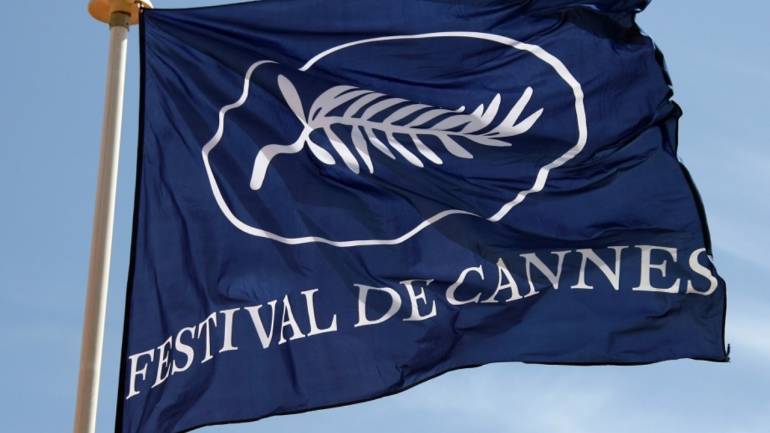On paper, this looks like a less than spectacular Cannes. Where are the stars? Where are the big names?
Just two of the 21 films in competition are American: Spike Lee’s “BlacKkKlansman” and David Robert Mitchell’s “Under the Silver Lake.” From the U.K., zero. Disney will bring “Solo: A Star Wars Story,” though it’s upstaging Cannes by holding the world premiere five days earlier in Hollywood. If you had to skip a year, this would be the time to do it, some have gone as far as to suggest.
I couldn’t disagree more. The fact that we don’t know what to expect from most of the films in competition makes this the most exciting lineup in ages — one with a genuine opportunity for discovery.
I’ve been attending Cannes since 2011. That’s how far you’d have to go back to find an edition with so few American movies in competition, but among the others, we got a little film called “The Artist.” That year, and every year since, the official selection has been cluttered with the usual suspects — established auteurs and previous Palme d’Or winners who seem to have a standing invitation to show whatever new film they’ve cranked out.
Masters make masterpieces, of course — not always, but often enough that prioritizing them makes a fair amount of sense. Still, I’ve been strongly critical of this approach, since it lends itself to a predictable lineup, with entries like last year’s “Happy End,” a career-recycling exercise from Michael Haneke, who has two Palme trophies to his name. It also fails to do the hardest part of any critic or festival programmer’s job: Anyone can celebrate work that parrots accepted standards of artistic quality; the challenge is to recognize original new voices and visions.
To the extent that Cannes is like Christmas for cinephiles — each day brings two or three mystery boxes for film lovers to unwrap — this year promises no shortage of surprises. By contrast, when the roster is half-full of such predictable names as Leigh and Loach, Morretti and Mungiu, Jean-Pierre and Luc Dardenne, the Christmas tree may as well be surrounded by crudely wrapped presents shaped like ponies or chain saws — you hardly need to open them to know what you’re getting.
At last, it seems Cannes artistic director Thierry Frémaux took that complaint to heart, opting to promote relatively unproven filmmakers over the old standbys — although Jean-Luc Godard and Nuri Bilge Ceylan (whose “Winter Sleep” won the Palme d’Or in 2014) are there to represent the in crowd, while the ban on Lars von Trier has been lifted (the controversial Danish director’s latest, “The House That Jack Built,” will screen out of competition — which is reason enough to be excited).
Because Frémaux stubbornly resists factoring gender into the selection process, we can extrapolate that the 21 Palme contenders got in on their own merits, whereas anticipated projects by Jacques Audiard, Xavier Dolan, Naomi Kawase, Claire Denis and László Nemes were turned down or not ready. Given the political pressure to stick with world-class auteurs, that’s a bold move. Typically, once Cannes has welcomed certain A-list directors into the fold, Frémaux doesn’t want to lose their latest work to Venice, Toronto, Berlin or Directors’ Fortnight — the parallel Cannes section (technically, a separate festival entirely, like Slamdance is to Sundance) that has been luring away films that Frémaux turns down for competition.
So, while new features from such celebrated talents as Asghar Farhadi (“Everybody Knows”), Matteo Garrone (“Dogman”) and Jia Zhangke (“Ash Is the Purest White”) should attract buyers looking for familiar art-house heroes, my hopes center on those breaking into competition for the first time this year. That includes artists like “Cold War” director Pawel Pawlikowski, someone world cinema takes far more seriously since winning a foreign language Oscar for “Ida”; NYU-trained Egyptian director Abu Bakr Shawky, whose debut “Yomeddine” is also eligible for the Camera d’Or; and Eva Husson, a French-born AFI graduate whose Sofia Coppola-esque “Bang Gang (A Modern Love Story)” screened in Toronto in 2015. (Her sophomore feature, “Girls of the Sun,” about a battalion of female Kurdish fighters, appears considerably more ambitious.)
Two directors, David Robert Mitchell, whose “It Follows” elevated the horror genre, and Yann Gonzalez , the radical new queer voice responsible for “You and the Night,” have previously been featured in Critics’ Week, so it would’ve been logical to see their new films land in one of the sidebars or parallel sections. That Frémaux selected Mitchell’s 140-minute “Under the Silver Lake” and Gonzalez’s gay-porn thriller “Knife + Heart” for competition suggests the pictures are better than expected.
While Ukrainian director Sergei Loznitsa has been “demoted” to Un Certain Regard, where his film “Donbass” will open the section, Kirill Serebrennikov — a controversial figure who impressed with “The Student” and is under house arrest in Russia — and Kazakh director Sergey Dvortsevoy, whose “Tulpan” is a gentle treasure, have graduated from the sidebar to the main competition with their respective latest films, “Summer” and “The Little One.”
It’s a strong year for Asian cinema overall, including new work by masters Lee Chang-dong (“Burning”) and Hirokazu Kore-eda (“Shoplifters”), as well as the Cannes debut of Japanese director Ryūsuke Hamaguchi’s “Asako I & II”; his slow-build, six-hour “Happy Hour” has been seen by few but ecstatically embraced by those who put in the time. I have no idea what to expect from that movie. But that’s the thrill of Cannes. As the world’s leading festival, it gets first dibs on the best art cinema available. It’s high time it expanded the (boys’) club to include a few fresh voices. Now let’s see what Santa has up his sleeve.

